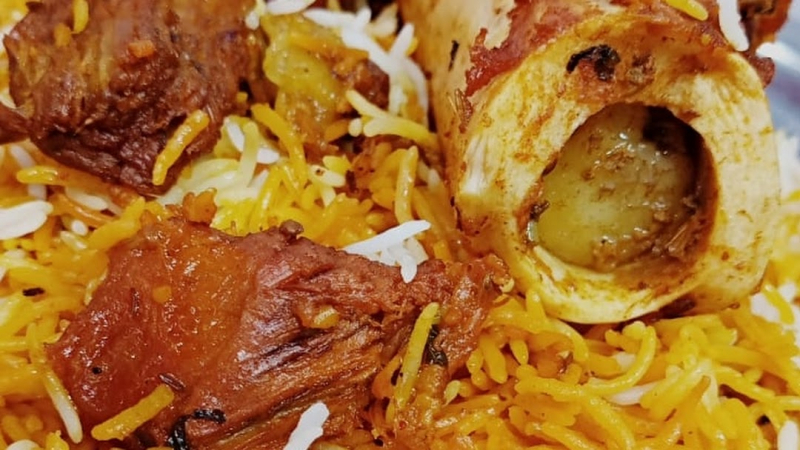Nalli Biryani
Nalli Biryani is a delectable South Asian culinary creation renowned for its aromatic flavors and tender meat. The history of this dish is a testament to the rich tapestry of Indian cuisine.
The origins of Nalli Biryani can be traced back to the Mughal Empire in the Indian subcontinent during the 16th century. The Mughals, known for their love of food and refinement of culinary arts, brought with them the concept of Biryani from Persia. This fragrant rice dish, a blend of rice and meat with aromatic spices, quickly gained popularity.
Nalli Biryani, specifically, gained recognition due to its unique focus on the nalli, which means 'marrow' in Hindi. The Nalli refers to the succulent bone marrow found in meat, particularly in cuts of lamb or goat, which adds a rich buttery element to the dish.
Over time, as Biryani spread across the Indian Subcontinent, regional variations emerged. Nalli Biryani became a specialty, particularly in North India and Hyderabad. The dish was prepared with marinated meat, spices, fragrant Basmati rice, and slow-cooked to perfection. The marrow in the bones imparted a distinctive, luxurious flavor to the dish.
Nalli Biryani's development continued as it adapted to regional preferences. It's often characterized by its tender meat, aromatic saffron-infused rice, and an array of spices, creating a harmonious blend of flavors. Today, Nalli Biryani remains a beloved dish in Indian cuisine, both within the country and among international food enthusiasts.















